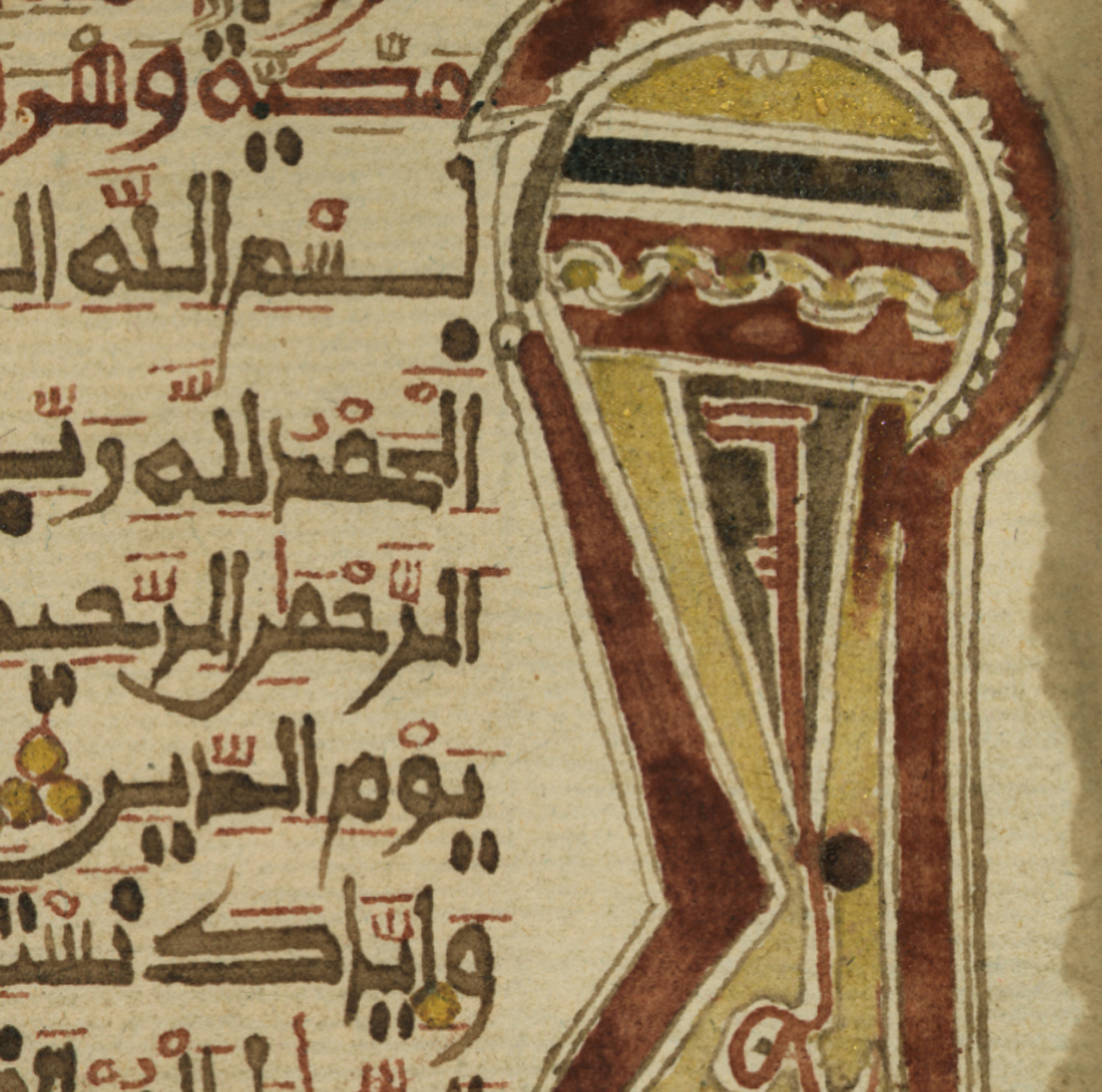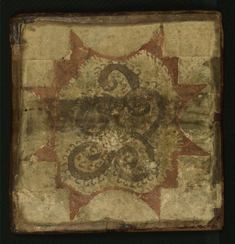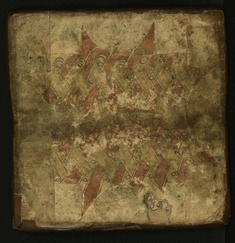Qur'an in Two Volumes with Leather Pouches
(Islamic Manuscripts, Islamic World )
Within Islamic cultures of both past and present, the creation of finely-written and decorated manuscripts of the Qur'an (meaning recitation) has been considered the highest form of religious devotion and artistic expression. This Qur'an manuscript examplified the distinctive form given to Islam's sacred text in the Muslim regions of Sub-Saharan Africa beginning in the 15th-16th centuries and continuing into the modern era. It is divided into two separate volumes, each encased within a tooled leather pouch with carrying straps. The text is written on square, loose, leaves of paper in an angular Arabic script known as magribi. The margins are decorated with medallions and cartouches that mark particular Qur'an verses and sections. The beginning and end of each volume are further embellished with full-page illuminations featuring geometric designs typical of Sub-Saharan art. Similar designs decorate the pasteboard covers (exterior and interior) that protect the unbound leaves, which are then wrapped with leather thongs. This work of art is of very high quality and generally excellent condition.
Provenance
Provenance (from the French provenir, 'to come from/forth') is the chronology of the ownership, custody, or location of a historical object.
Present in England, before 1974 [1]. Henry Brownrigg, London, 1980s [2]; purchased by Sam Fogg Rare Books and Manuscripts, London, 1980s [3]; purchased by Walters Art Museum, 2000.
[1] According to Sam Fogg
[2] Dealer who sold at Portobello Road Market in London
[3] Sam Fogg, "Islamic Manuscripts", 2000, no. 22, pp. 56-57
Exhibitions
| 2007 | Speaking the Word of God: Illuminated Korans from the Walters Art Museum. The Walters Art Museum, Baltimore. |
Geographies
West Africa (Place of Origin)
Measurements
Folio H: 4 5/16 x W: 4 5/16 in. (11 x 11 cm)
Credit Line
Museum purchase with funds provided by Islamic Acquisition Fund, 2000
Accession Number
In libraries, galleries, museums, and archives, an accession number is a unique identifier assigned to each object in the collection.
In libraries, galleries, museums, and archives, an accession number is a unique identifier assigned to each object in the collection.
W.853




